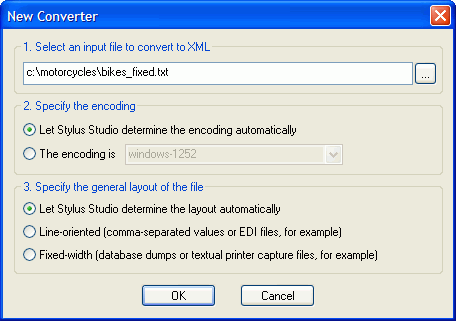Turn Csv File Into Xml Tutorial
Dma statistical fact book pdf. USPS reports that 93% of households take time to sort their mail each day and 83% enjoy receiving mail.5 2. Compare this with the average internet user, who sees roughly 77 emails and web advertisements each day. With less competition in the mailbox than the inbox, direct mail has more value and finds itself receiving more attention and responses than ever. It’s Highly Targetable Another reason direct mail will survive the digital age is because of data. In 2015, the number of consumer emails sent and received each day totaled over 93 billion.4 This number has increased at an average annual rate of 6% and is projected to reach nearly 118 billion by the end of 2019.
Before you start This tutorial is geared towards developers who want to learn how to store data in XML format in a database, connect to DB2 from a Python application, and learn how to convert data from CSV files into XML documents. No prior knowledge of Python is assumed (you will learn how to install it in this tutorial), but it would be advantageous. This tutorial assumes that you use a Microsoft® Windows® operating system, but the code should work on other platforms without modification. When you complete this tutorial, you will have the skills to create powerful Python applications that can communicate and interact with an IBM DB2 database and harness the power that pureXML offers.
In this tutorial, you will learn how to connect to a DB2 database from the Python programming language, importing data about population from the United States Census Bureau. You will use Python to convert this CSV file into XML, before inserting this XML data natively into DB2. A CSV file consists of any number of records (or lines), separated by line breakers; each record consists of fields, separated by commas. Ideally, all records have an identical sequence of fields. A CSV record is converted to an XML element and its fields can be converted to attributes of the element or child elements of it, depends on how the user wants.
About this tutorial. Frequently used acronyms • API: Application programming interface • CSV: Comma separated value • DBA: Database administrator • SQL: Structured Query Language • UI: User interface • URL: Uniform Resource Locator • XML: Extensible Markup Language The IBM DB2 database management system has long been a leading player in the area of relational data management. Dead effect mod apk data download. In recent years, however, there has been a significant rise in the requirement for data structures that are more flexible and document-oriented in nature. One of the more prominent examples of such data structure is XML.

Turn Csv File Into Xml Tutorials
While many relational database systems have rushed to incorporate some form of XML support in their database, IBM DB2 is the only such offering that allows XML to be stored natively in the database, unchanged and true to its original form. This is referred to as pureXML—a technology that allows DB2 developers and DBAs to manipulate and report on XML data alongside relational data, without negatively affecting the purity of the XML itself. In this tutorial, you will develop a Python script that connects to the United States Census Bureau Web site and downloads a CSV file containing data about the population at a national, regional, and state-wide level—including the results of the 2000 Census and fluctuations based on estimates in each year since then. You will then learn how to process this data, converting it into an XML document. Rather than import this large document and rely on DB2 functions to slice and dice it into individual rows, you will then use Python to insert this data into DB2, with an XML document stored per each relevant row in the CSV file. Finally, you will create a command-line application that produces some useful reports on this data, showing a list of states, regions, or countries in the order of highest to lowest population. Prerequisites To follow the steps in this tutorial, you will need to have the following software installed: • IBM DB2 Express-C 9.5 or later • Python Version 2.6 or any pre-3.0 version See for the links to download these prerequisites.